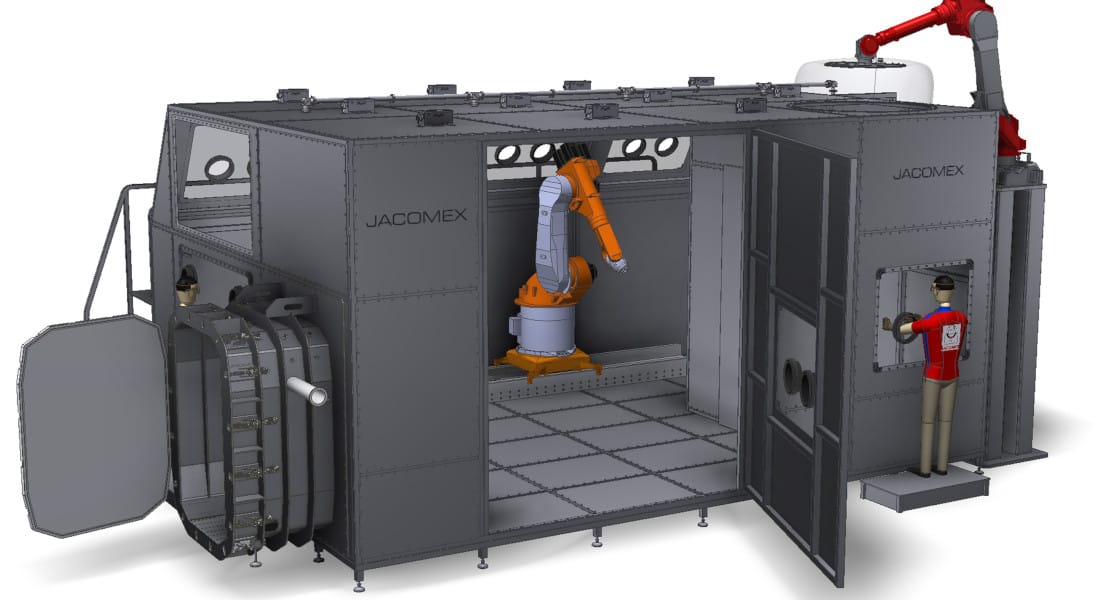The 5 benefits of additive manufacturing for the automotive/motorsport industry
1. Faster prototyping
Building prototypes with the same properties as their final counterpart is essential when building racing car components. This reduces both production times and costs, making 3D printing the ideal solution for achieving this objective. Thanks to its cost-effectiveness, additive manufacturing is a reliable way of validating parts before they go into mass production. It ensures that each component meets all safety requirements, while respecting budgetary constraints.
Strict regulations for Formula 1 teams are still set by the FIA (Fédération Internationale de l’Automobile), the governing body of motor sport. As a result, engineers have to quickly design and create new cars every year in order to remain competitive. To ensure their success, it is essential that the teams put these prototypes into production as quickly as possible after they have been designed.
With 3D printing, engineers can manufacture parts quickly without the tedious process of designing and creating a model and mould first. The technology works with digital CAD files that are transmitted to production instantly compared to traditional manufacturing methods. So it’s no surprise that this form of manufacturing is gaining momentum as companies look for more efficient ways to produce components.
For example, the Williams F1 grassroots team has been able to send out over 2,000 3D printed parts every month thanks to the use of this process. This figure would have been impossible to achieve if these parts had been produced using traditional manufacturing methods.
2. Greater design flexibility
3D printing enables cost-effective modifications to be made to components, saving designers time and money. With quick-fit capabilities and fast printing, engineers can spot errors faster and modify designs in less time.
Achieving optimum aerodynamics is paramount in the design of a race car, which requires a sleek shell. This poses a problem when it comes to packaging vehicle components that allow convenient access during pit stops due to the limited space inside. This is why meeting the ‘packaging’ challenge is particularly important for good race performance.
By harnessing the power of 3D printing, engineers enjoy an unprecedented degree of freedom to experiment with countless prototypes and create the ideal components for any project.
3. Improving wind tunnel testing
Cutting-edge 3D printing technology has become an indispensable tool for creating durable, accurate components that wind tunnel testing can use to assess the aerodynamic capabilities of racing cars. Motorsport is all about harnessing the forces acting on a vehicle and taking advantage of them to gain speed, which leads to success. Aerodynamics is essential: the use of advanced tools such as 3D printing and wind tunnel testing make this task very easy!
Formula 1 teams often only have the opportunity to test their cars a few times a year. The use of wind tunnel models is therefore an inexpensive and quicker way of evaluating a car’s components. These tests involve placing a vehicle model 60% the size of the original on a conveyor belt that reproduces the similar conditions (high speed, atmospheric pressure, etc.) that it undergoes during real races, making any necessary adjustments along the way.
For the time being, 3D printing is being used primarily to manufacture the components that will be tested on a replica racing car. Compared with machining and modelling, additive manufacturing for the automotive sector offers a faster and more cost-effective way of producing models for wind tunnel testing. What’s more, if modifications are required at any stage in the process, 3D printing makes it easier to generate parts that can then be immediately subjected to wind tunnel testing – all thanks to its exceptional speed!
Racing teams make extensive use of SLS and SLA 3D printing to create components such as front wings, brake ducts, suspension covers and engine covers, as well as internal ducts and hand deflectors that are tested in a wind tunnel. For example, using this technology, a racing team can produce 200 to 300 plastic parts a day! Additive manufacturing is therefore the solution of choice for companies in the sector to ensure that these components are produced quickly and efficiently.
4. Rapid tool production
3D printing technology is a game-changer for manufacturers when it comes to producing tooling equipment, such as jigs and fixtures or sacrificial and composite tools. This efficient process allows them to create custom instruments at lower costs than traditional production methods, while dramatically reducing turnaround times.
For example, using FDM technology to produce laminating tools using high-performance materials such as ULTEM makes the process faster and more cost-effective. Formula 1 team McLaren took advantage of this process when it 3D printed a large rear wing flap extension and produced the part in ULTEM 1010 in just three days – an incredible reduction on its previous lead time. This example demonstrates not only the growing importance of AM in all sectors of activity, but also that these advanced technologies have become essential elements of success.
With 3D printing, teams can produce tools when they need them, speeding up manufacturing and assembly processes. In fact, some teams have even started using additive manufacturing during races to make last-minute adjustments, reducing the cost of courier services. With this innovative technology at their disposal, success on race day is even more attainable.
5. Improving part performance
To increase the speed, reliability and productivity of race car components, additive manufacturing is a real asset. Aluminum and carbon fibre are generally used as lightweight parts in motor racing because of their low mass. With 3D printing making production easier, teams have seen a significant improvement in the performance of these components.
By using 3D printing to manufacture lightweight and complex thermoplastic and metal components, companies can gain a clear competitive advantage. After all, the weight savings achieved by 3D printed parts can determine the success or failure of a project.
Using 3D printing to produce metal parts such as pillar covers and garage equipment for its cars. Exhaust components and innovative cooler and radiator air inlet/outlet assemblies per car are also created using this process.
The challenges of 3D printing in motorsports
Despite the progress made so far in the use of 3D printing in Formula 1 and motorsport, there are still a number of obstacles limiting its full potential.
Guaranteeing the reproduction of identical parts
Although 3D printed parts can be incredibly accurate, material properties and final dimensions can fluctuate depending on who is carrying out the additive manufacturing process. When teams outsource all or part of this procedure, they run the risk of not obtaining exactly the same part every time.
However, the many benefits of additive manufacturing make it incredibly attractive to motorsport companies, forcing them to invest in developing their own capabilities and better control production processes.
Ensuring team training
Although 3D printing has been around for twenty years, its gradual adoption in manufacturing and education has meant that many designers lack the technical skills to master this form of additive manufacturing. When they attempt to use their company’s 3D printing capabilities, they may find that their lack of experience can lead to difficulties.
For motorsports to reap the benefits of 3D printing, companies must be prepared to invest in training programmes that will enable them to learn and perfect their skills.
Managing constant production
Motorsport companies are producing more and more parts, and their 3D printing capacity needs to keep up with demand. Some have amassed an impressive fleet of 10 or more machines, capable of producing thousands of components and prototypes every week. However, the sheer volume associated with these production runs requires a comprehensive workflow management system to ensure accuracy and efficiency. Without such a system, it becomes increasingly difficult for companies to manage the complexity of such large-scale operations.
The daily mountain of requests and the lack of visibility and traceability across multiple sites make it very difficult for teams to accurately track the progress of projects. This inefficiency is detrimental to the smooth running of operations.
To solve this problem, it makes sense to automate as much of the workflow as possible. Software designed to streamline workflow processes can help motorsport companies overcome many of their 3D printing production problems. Automating the enquiry process, scheduling jobs and tracking parts from start to finish are just some of the benefits that come from using automated workflows.
3D printing for motorsports: a competitive advantage
As the motorsport sector strives tirelessly to improve the performance of its cars while complying with ever-changing racing laws, 3D printing offers significant advantages.
By using this cutting-edge technology, teams will be able to dramatically reduce the time needed to develop new models and the resulting end-use parts, which has a number of benefits. The more additive manufacturing in motorsport is adopted and the challenges associated with its use effectively overcome, the more we will see even more ambitious applications that are sure to propel its use to new victories.
















